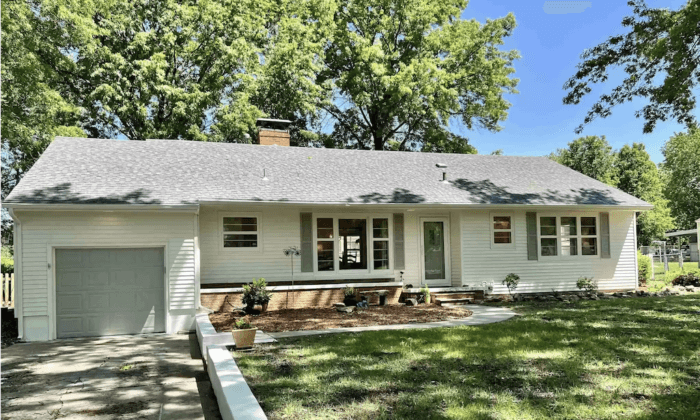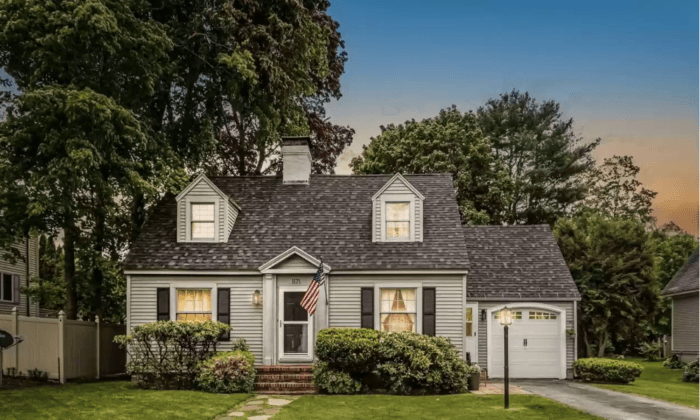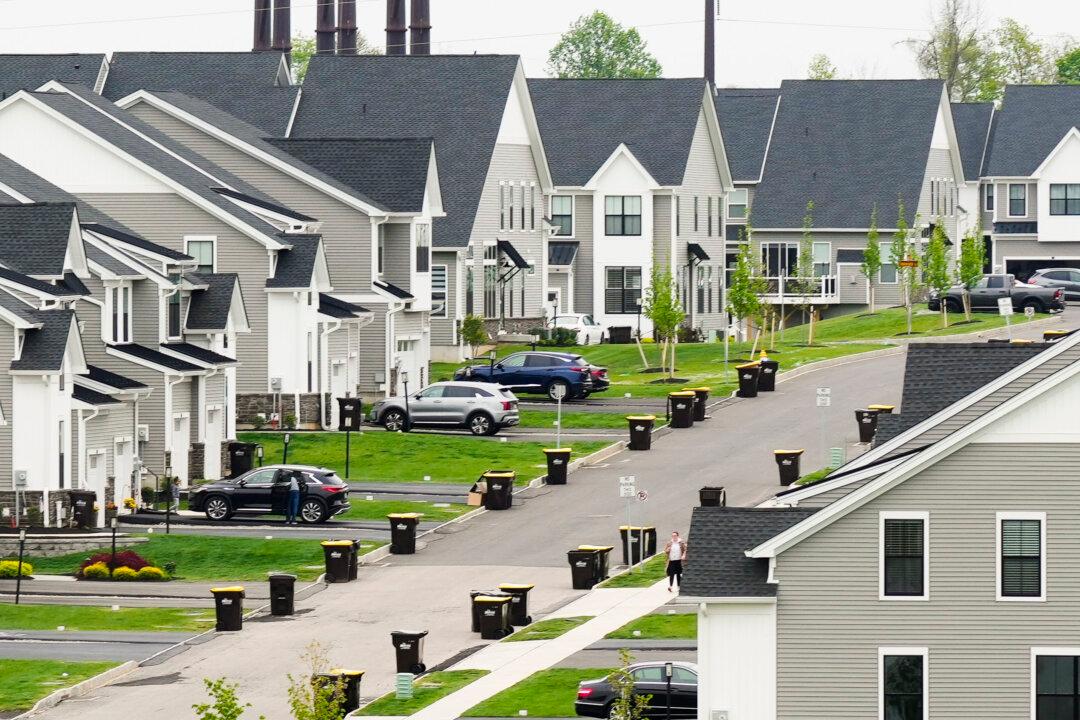How much money do we really need to buy a home, and can we afford it? These are questions that real estate agents and mortgage professionals hear every day, and the answer is always the same—it all depends on many different factors.
Sheetal Sawhney, originating branch manager at CrossCountry Mortgage’s office in North Bergen, New Jersey, cites the three main things people will need in order to prequalify for a mortgage: income statements (W-2s or 1099s and tax returns for the past two years), a recent credit report, and a current asset list (bank and investment statements).
CrossCountry Mortgage currently operates more than 600 branches in all 50 states.
“In addition to income verification and credit reports, we need to determine how much cash they have for a down payment and closing costs because that will affect their monthly mortgage payments,” she told The Epoch Times.
“Sometimes first-time homebuyers are able to borrow against their company 401K plans for down payments, but each company has their own guidelines.”
Generally, banks and mortgage firms require a 20 percent down payment, and anything less than that percentage will usually involve private mortgage insurance (PMI) payments. Sawhney said loans from the Federal Housing Authority are also available for those who qualify, and typically they require only a 3.5 percent down payment for one to four-family homes.
“Right now, the market has been so brutal,” she said. “We still have a demand for housing, but there are fewer homes and more buyers, so we continue to see multiple bidding wars. The sellers want to take the most attractive offers, and many buyers who are able to offer higher down payments are preferred.”
The latest data from Realtor.com puts the national median home price at $425,000. Given this scenario, a homebuyer would need a down payment of $85,000 (20 percent) or $42,500 (10 percent), plus PMI charges.
“In either situation, this can be very frustrating for first-time buyers who may not have a lot of savings,” added Sawhney. In some cases, lenders will agree to a 5 percent down payment, which would translate to $21,250, plus PMI.
George Ratiu, senior economist with Realtor.com, said the rise in mortgage interest rates only complicates the problem.
“The last four months have seen such a rapid acceleration of home prices and mortgage rates, and that combination has resulted in mortgage payments that are up to 50 percent higher than they were a year ago,” he told The Epoch Times. “Compare that with the 8.3 percent inflation rate, and you’re seeing a tremendous impact on people trying to qualify for a loan.”
La Crosse-Onalaska, Wisconsin, and Topeka, Kansas, held the third and fourth spots on the list with median home sales prices of $300,000 and $195,000, respectively. Burlington, North Carolina, took fifth place with a median home price of $350,000.
“Looking at the data we collected, we continue to see the ‘donut effect,’ where homebuyers are stretching out their commute up to 2 1/2 hours from their local metropolitan area, the center of the donut,” said Ratiu.
“We see the same thing on the West Coast, where people are purchasing over an hour away from San Francisco or Los Angeles.”

A search on Realtor.com’s website for a $425,000 home in Manchester provides a ballpark estimate of expected monthly payments. With a 20 percent down payment and 5.25 percent interest and estimated local real estate taxes, the monthly payment could be in the area of $2,503. With a 10 percent down payment and the same interest rate, the monthly bill would be about $2,937.
“Everyone wants to know what’s going to happen, and while I do see a leveling out, I don’t see a repeat of the 2008 recession,” Ratiu said.
“The underwriting of home loans is like day and night compared to that time, and there’s a lot more regulations now. Plus, we still have strong demographics supporting demand, and the younger generations remain interested.”
Ratiu said Realtor.com has already started to see more listings coming on, including new construction. According to data from the National Association of Home Buildings (NAHB), there was a 13 percent increase in new home construction nationwide in both 2020 and 2021.
Rose Quint, an economist with NAHB, told The Epoch Times that the majority of new building starts were in the South and West, leaving out the heavily populated Northeast.
“During and after the pandemic, there has been a migration to areas like North Carolina, Georgia, Florida, Texas, Arizona, Colorado, and Idaho,” she said.
“People who now have the opportunity to work remotely are leaving the bigger metro areas to find housing in warmer, more spacious communities.”
In fact, she noted, 37 percent of newly constructed homes in 2020 sold for less than $300,000. However, April 2022 stats indicate just 10 percent of homes sold nationally were under $300,000.
“Keep in mind that the cost of building materials has escalated by about 35 percent, and the price of lumber is now over twice the cost from just two years ago,” she said.
“Builders have to now increase the prices of homes, and just the lumber alone can often add $30,000 to the price of a new home.”
While prospective homeowners from states such as California, New York, and Massachusetts, as well as Washington, D.C., may be unaffected by price increases of new homes in the South and West, Quint noted that the locals in those regions are often being priced out of their own market.
“Affordability is going to be a serious issue in this country,” she said. “Just under 50 percent of the homes sold in the U.S. in the first quarter of this year were affordable for the typical median-income family.”
The current national median family income is $90,000.
The NAHB expects single-family housing construction to be flat for the rest of 2022 and decrease by about 6 percent in 2023. However, Quint noted that multi-family construction is very strong, as people still seek rental opportunities.
Whether purchasing new construction, a single-family home, multi-housing dwelling, condo, or co-op, the bottom line for lenders is determining an acceptable debt-to-income ratio. Sawhney said that would ultimately determine how much people can afford to spend on a home.
“Some people have a lot of debt, like car loans or student loans, while others have very little debt,” she said. “We also consider property taxes, which can often break a deal if they’re too high.”
In the New York metro area where Sawhney operates, many potential homebuyers often look for lower-cost alternatives like condos, co-ops, or “fixer-uppers.”
“For those who really want a more affordable, move-in-ready, single-family home, the trend is to travel further away from the city to get a better deal,” she said.
She added that it’s not uncommon for people to look as far away as neighboring Pennsylvania. “A lot of people are now going into their city office only two or three days a week, so they’re not commuting every day.”
With interest rates now hovering at 5.25 percent, monthly mortgage payments can be hundreds of dollars more now than they were last year, when rates remained in the low 4 percent range.
“A lot of people who got preapproved last year are finding they need to get preapproved again due to the increased rates,” she said. “And now, they may not be able to afford the same priced house as they would have in 2021.”
Sawhney suggests that potential homebuyers seek out a banker or mortgage lender first, before working with a real estate professional, so they have a clear understanding of what they can afford.
She also offers her own list of dos and don’ts for clients, including do disclose all other loans and don’t make any major purchases such as a car, appliance, or furniture that could affect the debt-to-income ratio. She also advises clients not to make a major career change until the loan closes.
“Home ownership is not out of reach—you just have to do your homework first and choose what will work best for your budget.”





